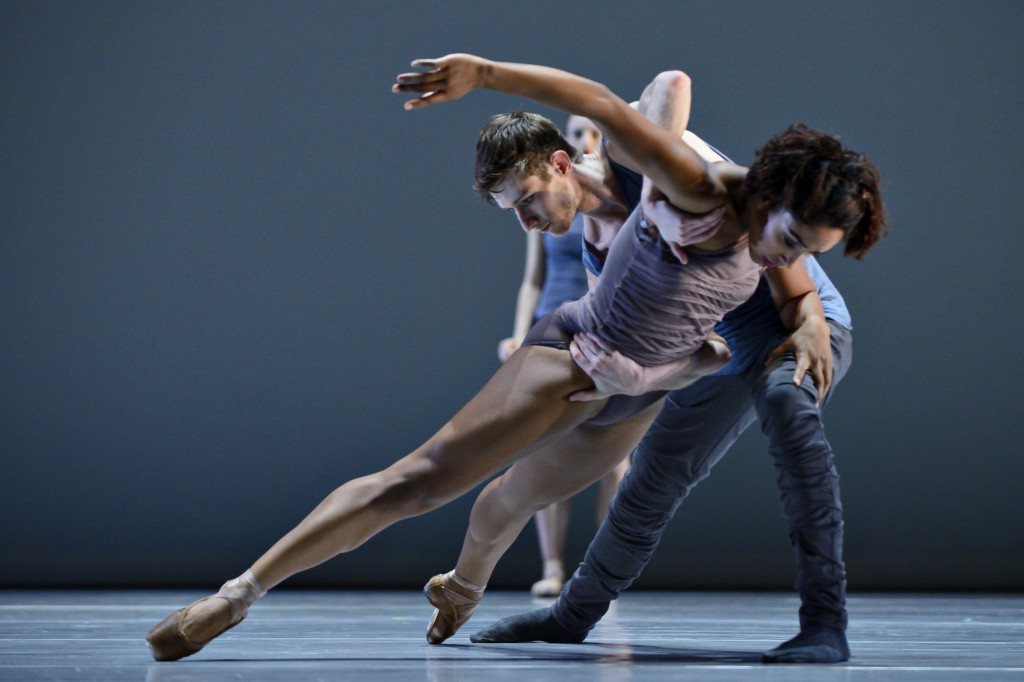Tilt at the Queen Elizabeth Theatre
By Julia Siedlanowska, Staff Writer
Tilt at Ballet BC premiered two new choreographies and brought back an old favourite this Thursday at the Queen Elizabeth Theatre, where the show will run for three nights only.
The first piece, “I and I am You” by Jorma Elo, was a beautiful showcase of bodies.
Out of the three pieces, this one allowed us to marvel at the skill of the dancers with the cleanest slate, and was a good piece to start the show. It opened in complete silence. Then, three large industrial-looking lights came on and a dancer ran into the stream. This set the tone for the rest of the show.
The piece was set solely to the music of Bach with a modern feel to the movements. The choreography struck me as largely horizontal; there weren’t many spectacular lifts and the piece was very grounded. The moments when the choreography seemed to best depict the music were beautiful.
The next piece, “16 + a room,” was choreographed by Emily Molnar, Ballet BC’s artistic director. When watching this piece, don’t remove your eyes for even a minute. After another silent beginning, the piece starts with a dancer holding a sign that reads, “This is a beginning.” The music then explodes in a succession of pops and clicks to the fantastic composition of Dirk P. Haubrich, and the dancers similarly combust off the stage.
This is where I noticed Jordan Tuinman’s lighting. The dancers perform a hair-raising piece as the lights fade and brighten as if a generator were dying and then again supplying more power.
The piece culminates with all the dancers on the stage. To watch this, we must look as if on stars—the piece shines brighter when we observe the whole sky instead of individuals.
Another dancer comes on stage with a sign that reads, “This is not the end.” All the dancers start pulsing as if on a video loop and the effect is unreal. The lights slowly go out.
The third piece was “Walking Mad,” originally premiered in Den Haag in 2001 and presented in March of last year by Ballet BC.
Choreographed by Johan Inger, this was the most theatrical of the three choreographies, and the only one with an actual set piece. A dancer walks on stage from the audience to seemingly lift the curtain and reveal a wooden, gapless fence. The dancing begins and soon we see the comedy in the piece.
A group of men enter in pointy, red party hats and chase a girl around the room. One gets left behind to explore his pelvic-thrusting dance moves while no one is watching, only to have the group walk in again in the middle of his solitary party.
However, the piece ends on a much less cheery note. A solemn duet leaves us sad, contemplating the story we just witnessed. A sullen girl obsessed with a trench coat on the floor cannot be distracted by her partner, who eventually jumps off the fence and is never to be seen again.
The night presented a variety of pieces all differing in style and composition.
While in Elo’s piece we were able to admire the dancers’ amazing technique, Molnar’s choreography stands out because of the spectacular pairing with Haubrich’s composition and because of the way she works with her dancers. The piece was in collaboration with the artists of Ballet BC, so we can only suspect that the dancers were able to so freely inhabit the piece because of the artistic licence they were able to practice. With the first two choreographies having a cold quality about their simplicity and lack of a clear story, the night ended with more emotional reflections in Inger’s piece.
Tilt showcased talent in all aspects of the production and left me thinking about the pieces longer, if not instantly dropping my jaw.
[Dancers Livona Ellis & Darren Devaney / Photo by Michael Slobodian]


